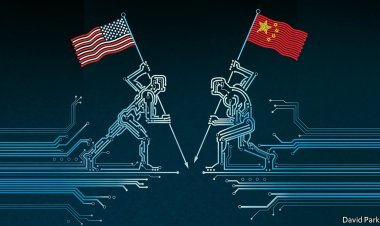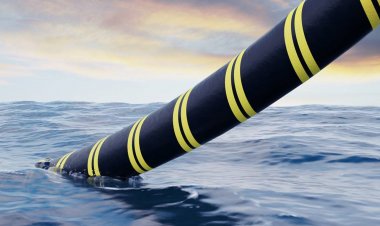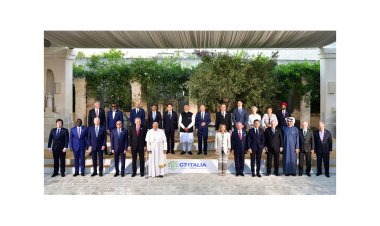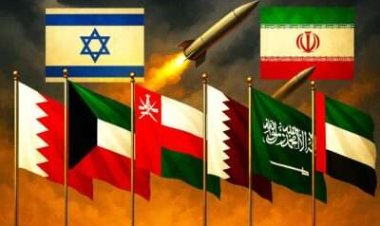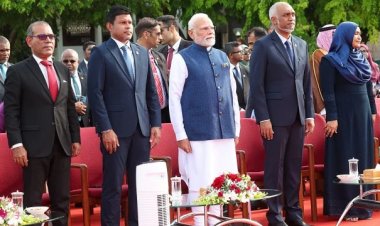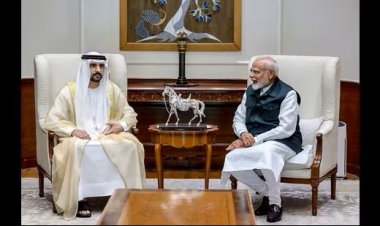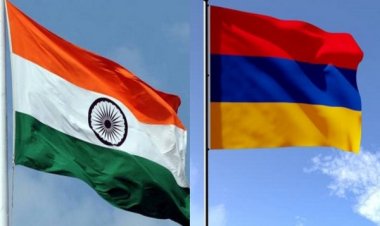The Middle East: An Emerging Market for Chinese Arms Exports
There is a visible growth of arms trade between China and some of the Middle Eastern countries in recent years. While this is not a new trait, the juncture at which such activities are taking place between these countries is interesting as well as intriguing.
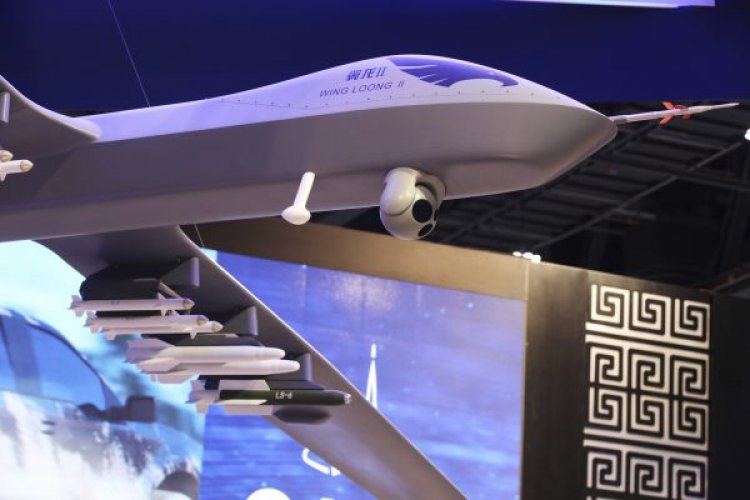
By Alvite Ningthoujam
Steadily, there is a visible growth of arms trade between China and some of the Middle Eastern countries in recent years. While this is not a new trait, the juncture at which such activities are taking place between these countries is interesting as well as intriguing. For a prolonged period, the United States (US) has remained the top supplier of arms to some of the regional clients, including Saudi Arabia, Qatar and the United Arab Emirates (UAE). Alongside this, the European arms exporters (including the United Kingdom, France and Spain) have also secured a considerable share of the Middle Eastern defence markets. This longstanding trend, however, will likely see a shift in the near future with the gradual entry of China as one of the arms sellers to the Middle East. Since the past decade, there already have been enough evidences to suggest that Beijing is working unrelentingly to tap the lucrative defence markets in this region where it already had traded in military-security sectors during the 1980s and 1990s.
Understandably, China’s footprint in the entire Middle East is widening rapidly ever since it has announced its Belt and Road Initiative in 2013. It has also become the largest trading partner as well as an investor for a few countries in the region. While for now, its main focus is on clinching major BRI-connected economic investment deals, infrastructural and connectivity projects, Beijing appears to have taken cognisance of the lucrativeness of the defence markets of the Middle East. The developing geopolitics in the region, and also uncertain policies of the US, seem to have made China reorient its strategies. It is within this ambit that Beijing sees a favourable opportunity to enhance military-security ties with some of the Middle Eastern countries (especially the affluent Persian Gulf nations) and arms trade is going to emerge as an important dimension in a few cases. With an objective to make the ties more comprehensive and also to do away with traditional patron-client sort of relations, China and the Persian Gulf countries, in all likelihood, will attempt to focus more on mutual technology transfer and licensed co-production of certain types of weapons systems. This would be, nevertheless, in addition to what China could offer and sell the regional clients with some of its locally designed and manufactured defence items.
Since the last few years, China could be seen making calculative moves in its dealing with most of the oil-energy rich and geo-strategically located Middle Eastern countries. The unveiling of China’s Arab Policy Paper in January 2016, just a week before the visit of President Xi Jinping to Saudi Arabia, Egypt and Iran , seemed to have given this East Asian country a clarity to adopt certain strategies pertaining to the region. The said policy document emphasises on the centrality to “achieve win-win cooperation, common development and a better future of the China-Arab strategic and cooperative relations.” Furthermore, it categorically mentions the need to intensify China’s military cooperation with the Arab countries, and also to “deepen cooperation on weapons, equipment and various specialized technologies, and carry out joint military exercises.” It further adds that “We [China] will continue to support the development of national defence and military forces of Arab States to maintain peace and security of the region.” From this, it is amply clear regarding China’s strong interest to include military-security cooperation, including arms trade and weapons co-production, as one of the dimensions of its overall Middle East strategy. What has further added to its advantage is the country’s technological advancement in the defence research and development (R&D) programs, particularly in the missile and drone domains. These are a few weapons systems which the Middle Eastern clients are looking forward to import.
Discernibly, demand for advanced weapons systems and defence technologies are on the rise in the Middle East. This is mainly due to the existing nature of both conventional and non-conventional threats some of the countries are continuously facing and also due to tensions between a few states within the region. For instance, the unresolved and controversial Iranian nuclear program has made some of the Sunni-dominated countries stock up their arsenals, while threats from non-states actors, including remnants of the Islamic State of Iraq and Syria (ISIS) and Al Qaeda, continue to pose serious security threats in the region. Countries like Saudi Arabia, in particular, remain wary about threats to their internal security as well as frequent missile and drone attacks perpetrated by Yemen-based Houthi rebels from across its southern borders. In the midst of these challenges, restrictive arms sales policies of major exporters like the US, mostly pertaining to items such as armed drones, have pushed countries like Saudi Arabia and the UAE to look for other available alternatives with less strings attached while dealing with arms sales. Apparently, for now, this is an important void which China is endeavouring to fill up for these potential clients.
As per a recent Stockholm International Peace Research Institute (SIPRI) report, the Middle East witnessed the “biggest growth in arms import” for the period 2016-2020. The region imported 25 per cent more arms as compared to 2011-2015 period. Saudi Arabia, one of the closest partners of China, remains the world’s largest weapons importing country, and it alone “received 11 per cent of global arms imports,” with the US accounting for 79 per cent of its total imports in 2016–20. Qatar, with whom Saudi Arabia cut diplomatic ties in 2017 and restored relations in January 2021, is another country that has been expanding its armed forces since the mid-2010s. During the last few years, it’s military-security ties with China, inclusive of arms purchases, have been expanding. Similarly, with a slight decline in arms imports during 2016-2020, the UAE has also emerged as one of the major weapons importing Persian Gulf country. As it is, most of the biggest Chinese economic investments are taking place in these mentioned countries, and Beijing, in all likelihood, would consider their markets as its "lucrative destinations for military technology exports".
The Middle East’s gradually growing military-security cooperation and arms trade with China coincides with the latter’s rising profile as one of the major international arms exporters. During the 2016-2020 period, China was the world’s fifth-largest weapons exporting country, with Pakistan, Bangladesh and Algeria being the largest recipients of its military equipment. Four of the Chinese arms companies – Aviation Industry Corporation of China (AVIC), China Electronics Technology Group Corporation (CETC), China North Industries Group Corporation (NORINCO) and China South Industries Group Corporation (CSGC) – have been playing an instrumental role not only in the military modernisation programs of the Chinese armed forces but also in generating foreign revenues through the exports of their defence items.
While the Chinese arms sales to the Middle East, for now, remain limited, the willingness of the aforementioned Persian Gulf countries to import its systems will likely open more doors for further trade in the times to come. Further, the timely expiration of the United Nations arms embargo on Iran in October 2020 would have been considered as a ‘boon’ by both China and Iran, particularly considering the upward trajectory of their bilateral cooperation in recent times. The much exaggerated “Comprehensive Strategic Partnership” agreement signed by both the countries in March 2021 called for cooperation “mechanisms in the fields of … equipment and technology [in the security and defence domain].” Moreover, China is manufacturing and exporting items, such as missiles and drones, and Iran would be interested in procuring such systems from its East Asian partner.
While Iran is a prospective arms client, China would, however, have to tread carefully in dealing with the Islamic Republic, mainly considering its more lucrative economic partnerships with the other aforementioned Persian Gulf countries. If China thoroughly comprehends the prevailing economic and financial difficulties Iran is currently facing, then, it will also remain wary about signing any major arms deals with the latter. Under such circumstances, there could be uncertainties over deliveries, if arms deals were to be signed anytime soon or later. Moreover, with the change of the administration in the US, Beijing would want to wait and see if tensions could be eased with Washington, and to this end, it would not want to antagonise the Joe Biden administration by supplying more arms to Tehran. This being said, the emerging geopolitical scenarios will likely, to an extent, also influence China’s Iran policy. In the event of more isolation of China and Iran from the international community, one should not rule out an acceleration of the overall military-security cooperation, let alone arms trade, between the two countries.
Lately, certain headways have been made by Saudi Arabia and the UAE in their respective cooperation with China in the military-defence spheres. It is this development which has triggered renewed discussions over China’s increasing military-security ties with countries in the Middle East. A source has indicated that between 2016 and 2020, China had increased its volume of arms transfers to these two countries by 386 percent and 169 percent, respectively, compared to 2011-2015. While the share could be insignificant as compared to that of other traditional arms exporters, these figures have signalled a systematic ‘entry of the dragon’ into the region.
In March 2017, taking a step forward, Saudi Arabia’s King Abdulaziz City for Science and Technology and China Aerospace Science and Technology Corp. signed a partnership deal to produce in the Kingdom China’s CH-4 Unmanned Aerial Vehicle (UAV) (similar to the US-made MQ-1 Predator drone). Saudi already is in possession of this Chinese-origin technology since 2014, and so is Iraq. This facility will likely operate as a hub “for manufacturing and servicing for other CH-4 operators in the Middle East, including Egypt, Iraq and Jordan.” Likewise, the UAE, a coalition partner in the Saudi-led air campaign against Houthi rebels in Yemen since 2015, had imported Chinese-made Wing Loong I drones in 2011, and became the first customer of Wing Loong II drones in 2017. This has evidenced the hassle-free arms trade between China and its Middle Eastern clients while the US remains reticent to supply its traditional partners with similar systems. Beijing’s further involvement while dealing with such category of arms, in the long run, could run against the American arms business as well as strategic interests in the region.
China, for now, would not worry much about coming face-to-face in competition with giant arms exporters to the Middle East, including the US. It remains well cognisant of the position that has been secured by the US in terms of the volume and categories of arms supplied, and also their qualities. Beijing would, however, keep the momentum going, and will strive harder to ink more arms deals with the regional clients hereon. Its motive for selling arms to the region is more for commercial and economic gains, rather than political objectives. But this is not to say that these incentives are completely detached from China’s national security and strategic interests.
The gradually growing arms trade, indeed, is giving further leeway to China to expand its strategic footprints in the region where its economic investments and technological assistance are welcomed and massive. In the Middle East, China has found a lucrative market for some of its defence products, while the former would continue to rely on Beijing’s economic and technological assistances for economic modernisation programs and infrastructural development projects. It is this strong convergence of mutual interests that are going to fuel the growth of Chinese arms sales to the region.
In the long run, defence industrial cooperation and transfer of technology will likely form a pivotal component of China-Middle East engagements. Considering defence industrialisation programs in some of the Persian Gulf countries, Chinese military technological assistance would be sought. Further, as China’s reputation as a global arms exporter increases, the Middle Eastern countries will also have an alternative arms vendor to shop from. This would come much to the dismay of the US. As Beijing penetrates gradually into the Middle East by selling its arms, it is likely to raise more eyebrows in the West, particularly the US. Suffice to say that there are indications that future Sino-Middle East trade in arms could flourish, given the unrelenting endeavours from the respective governments to augment cooperation in this domain.
Alvite Ningthoujam is Senior Fellow at Usanas Foundation. He is an Assistant Professor at the Symbiosis School of International Studies (SSIS), Pune, India.
Disclaimer: This article is the author's individual scholastic contribution and does not necessarily reflect the organisation's viewpoint.
This article was originally published in The Diplomat



